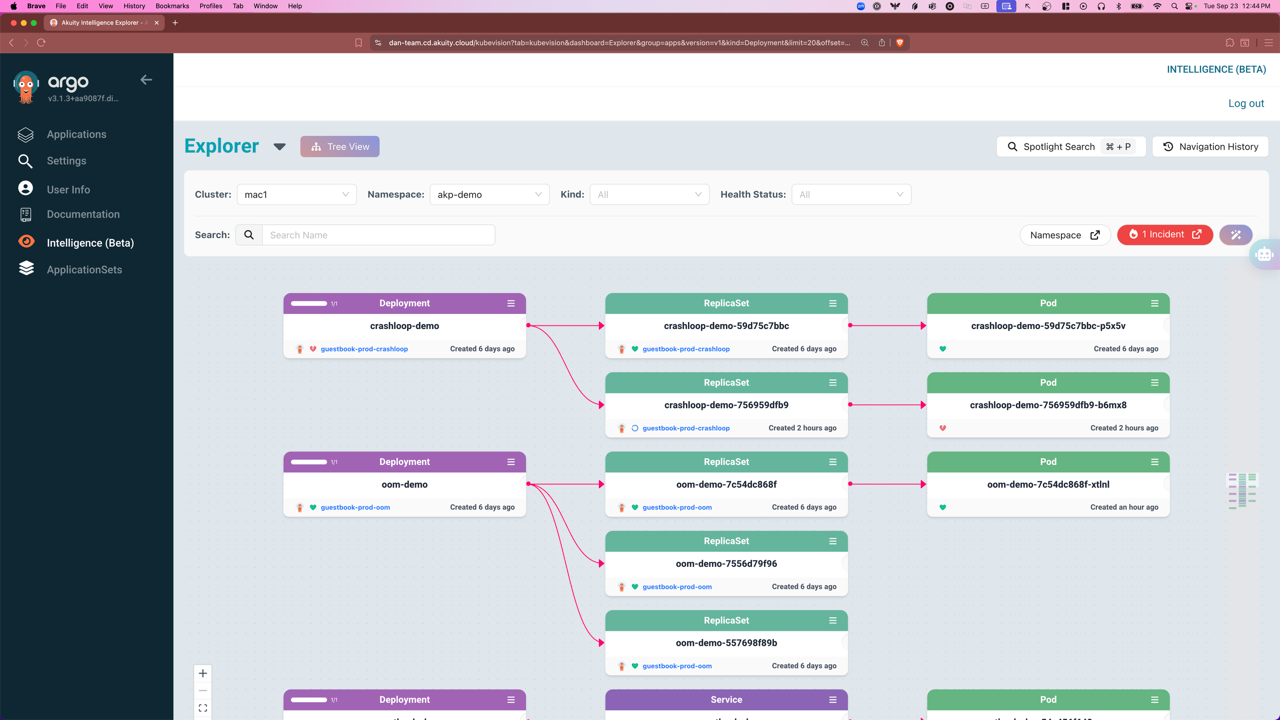Akuity Applies AI to Both Management of ArgoCD and Kubernetes Clusters
Akuity this week added artificial intelligence (AI) to its implementation of the open source ArgoCD platform that enables IT teams to detect degraded states across applications, triage incidents and automate fixes in minutes.
Company CEO Hong Wang said the AI capabilities enabled by Akuity Intelligence also extend to the underlying Kubernetes infrastructure on which the Akuity CD is deployed, making it simpler to manage both platforms.
ArgoCD presents DevOps teams with a graphical user interface to manage application deployments. That approach already abstracts away many of the lower-level Kubernetes interfaces that IT teams would otherwise have to master. Akuity is extending that integration further in a way that automates a much wider range of tasks using a set of AI tools that have been trained using best GitOps practices.
That approach enables IT teams to apply AI to the management of Kubernetes clusters at a higher level of abstractions, noted Wang. A set of integrated dashboards enables IT teams to view all Kubernetes resources without having to switch to a different set of tools. Logs, events, metrics and deployment history can now all be centrally managed, noted Wang.
That data can then be used to enable AI agents to autonomously invoke runbooks in off-hours to resolve issues without having to wake an on-call engineer, said Wang. The AI agent can then send a Slack message that informs the IT team of the action taken, he added.
The Akuity distribution of ArgoCD has been rearchitected to be 100 times more scalable than the original open source project, which also makes it simpler to apply agentic AI workflows across thousands of Kubernetes clusters from a single unified control plane, said Wang. Akuity also makes extensive use of Kargo, an open source continuous promotion orchestration framework, that eliminates the need to rely on custom scripts in a way that also provides a set of guardrails to ensure software is safely deployed.
The overall goal is to make it possible to detect, troubleshoot and remediate issues with a few clicks that previously would have required multiple days to accomplish, added Wang. In many cases, those issues will be detected simply by tracking any drift away from the optimal configuration defined by an internal IT team, he added.
It’s not clear to what degree AI might be applied to the management of Kubernetes clusters, but as a platform that was originally designed to build other platforms, arguably the best way to automate the management of clusters is likely going to be via a layer of abstraction that sits above the Kubernetes cluster.
The challenge, of course, is that the individuals managing, for example, ArgoCD may not necessarily have been also tasked with managing the underlying Kubernetes cluster. However, as IT management continues to evolve in the age of AI, the one certain thing is that many of the lines that today isolate various silos within IT organizations are now going to increasingly blur.



